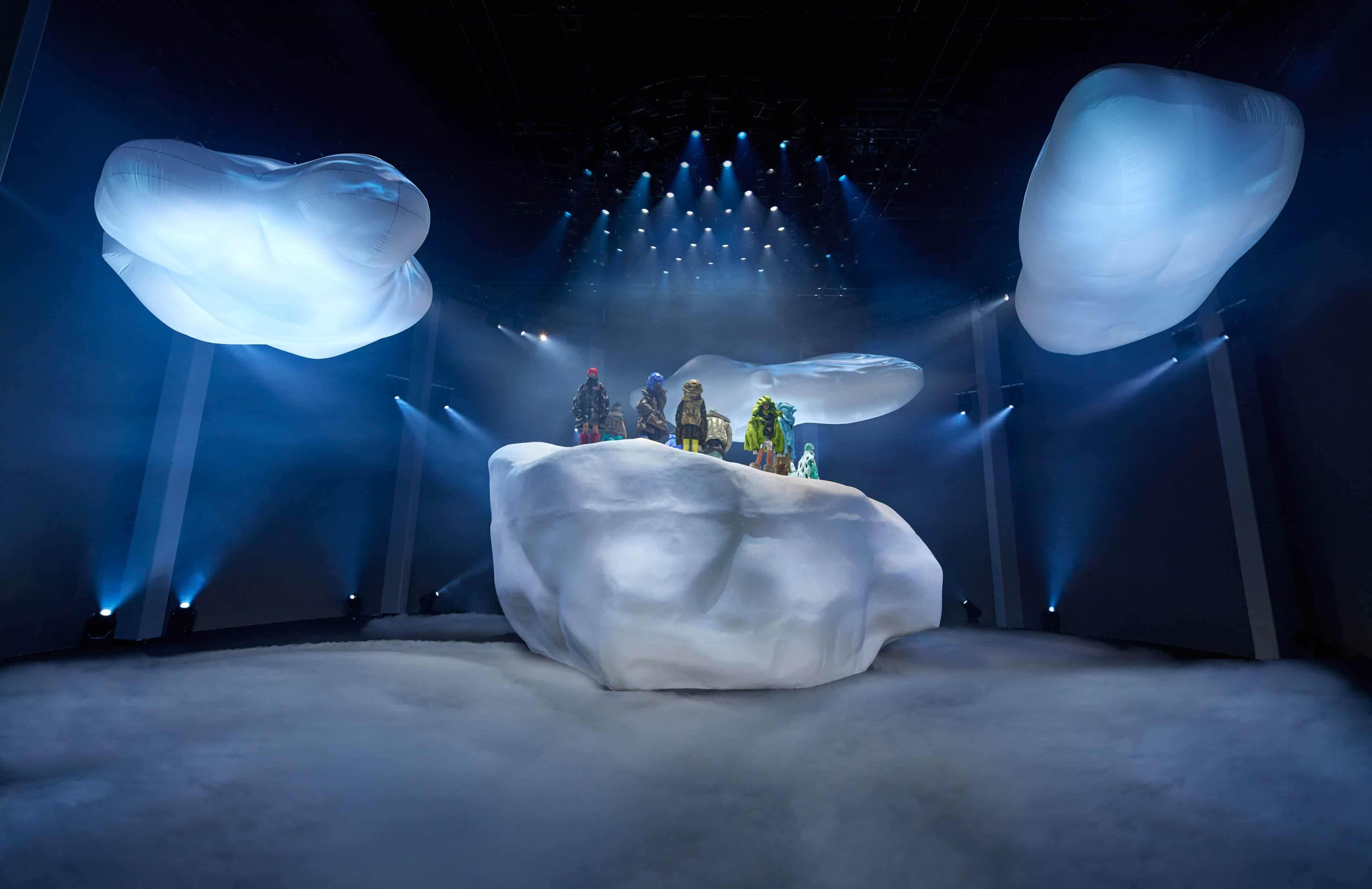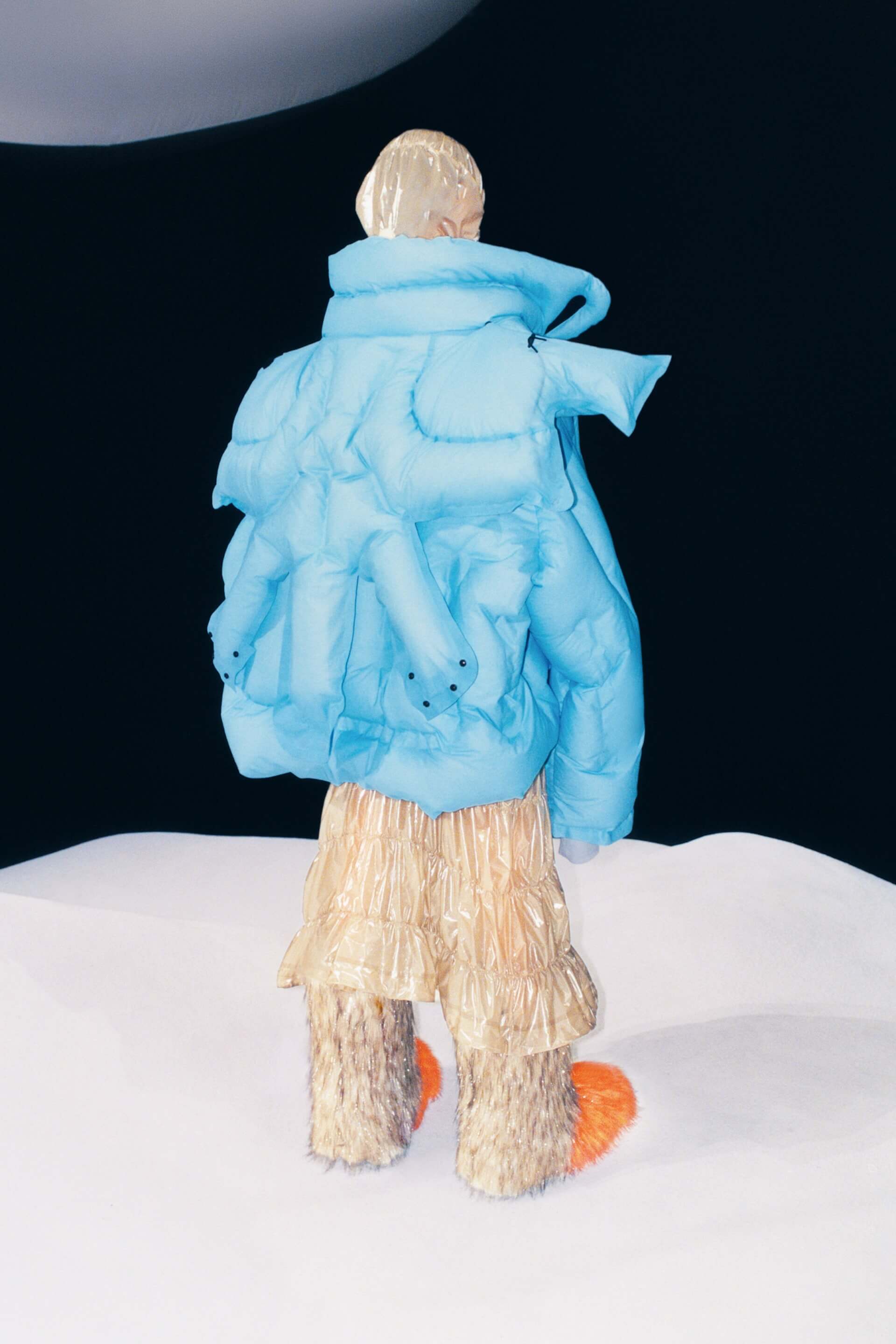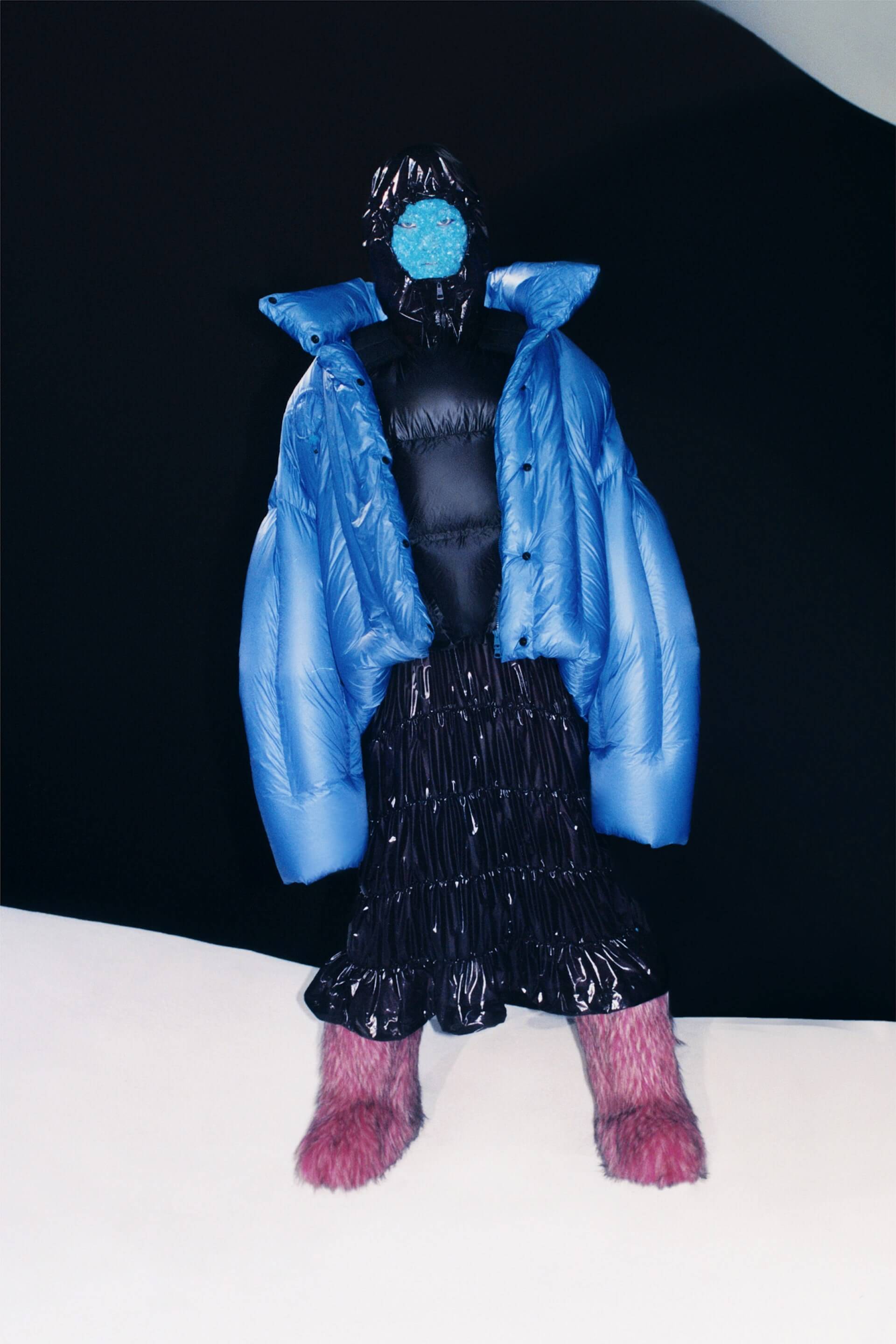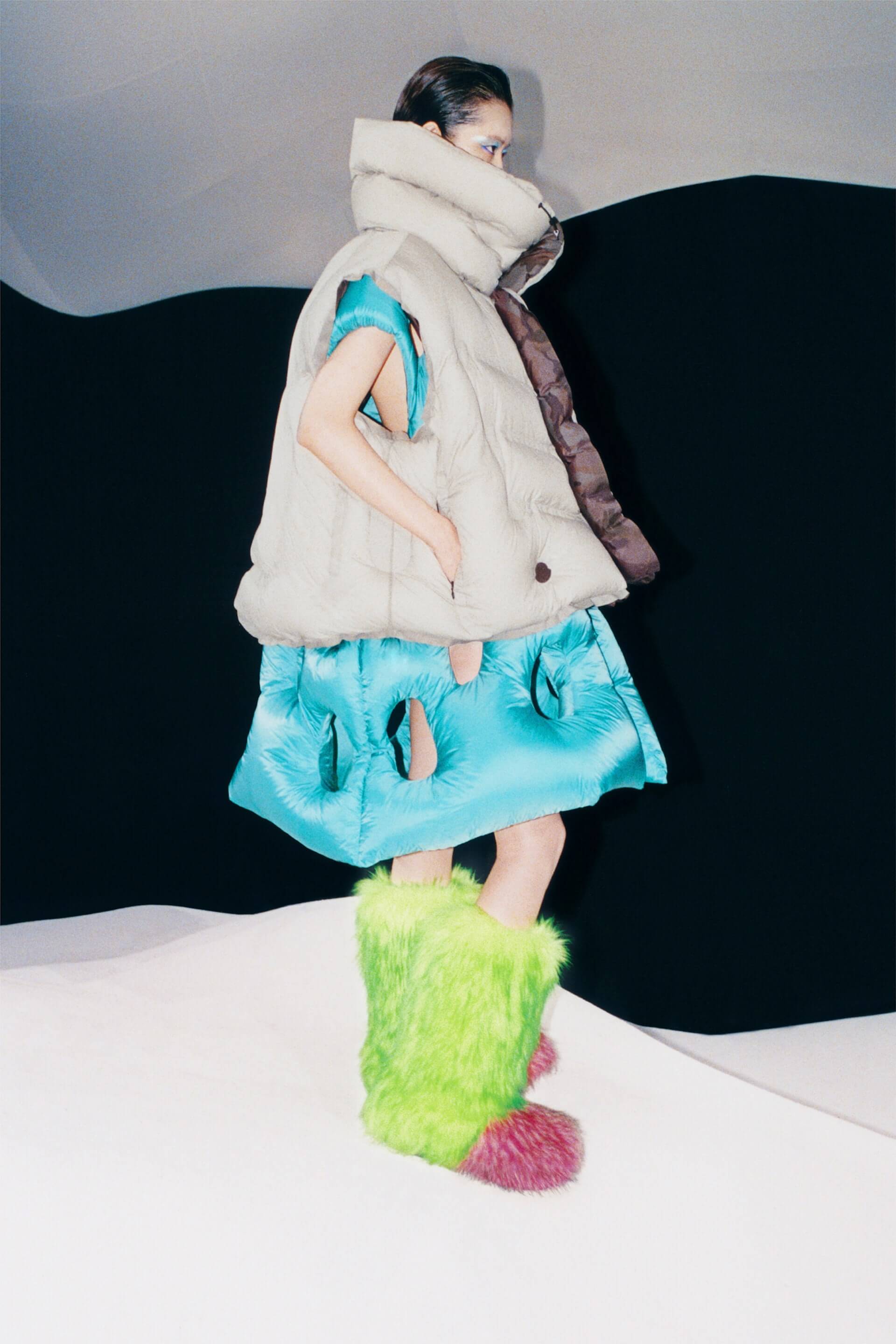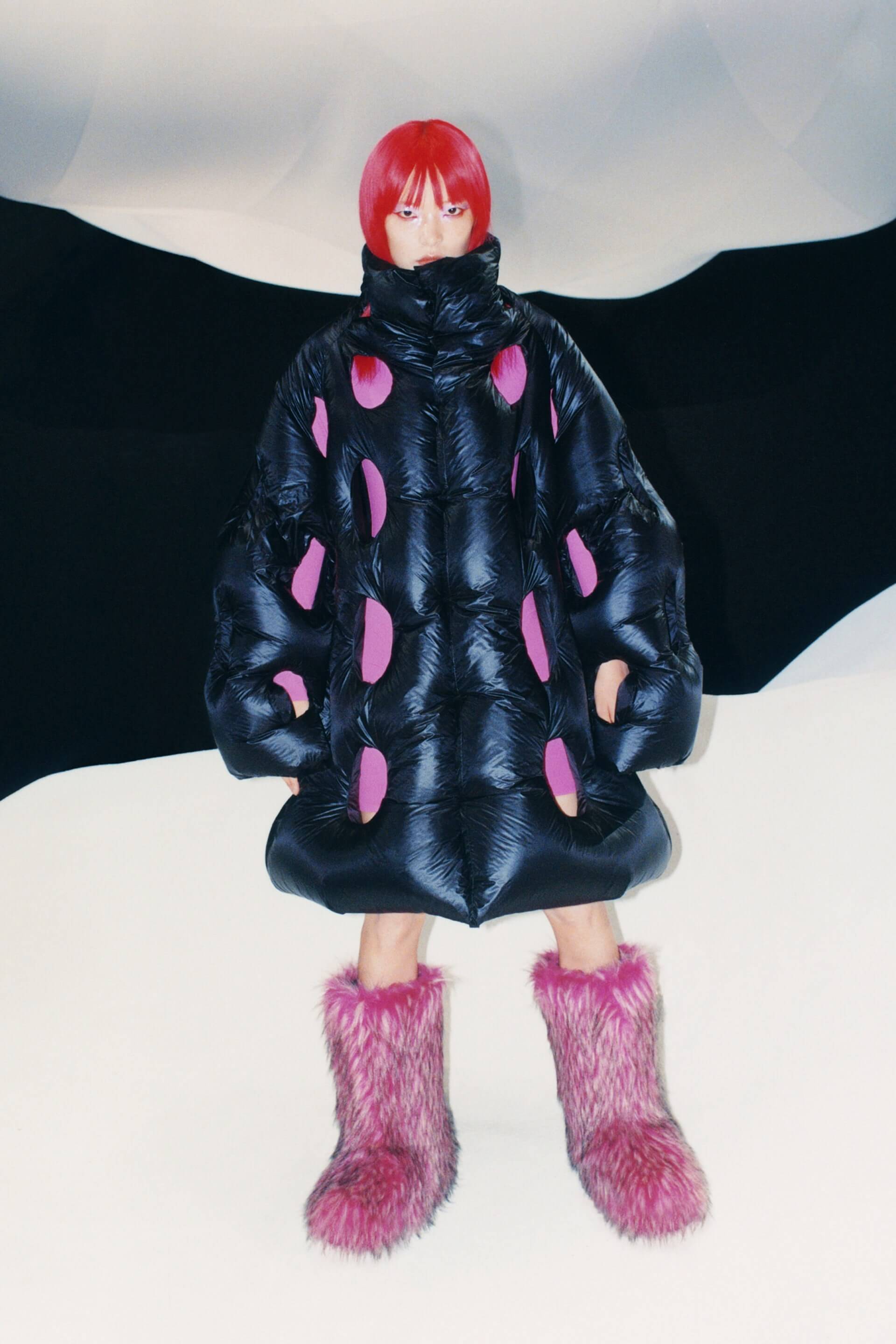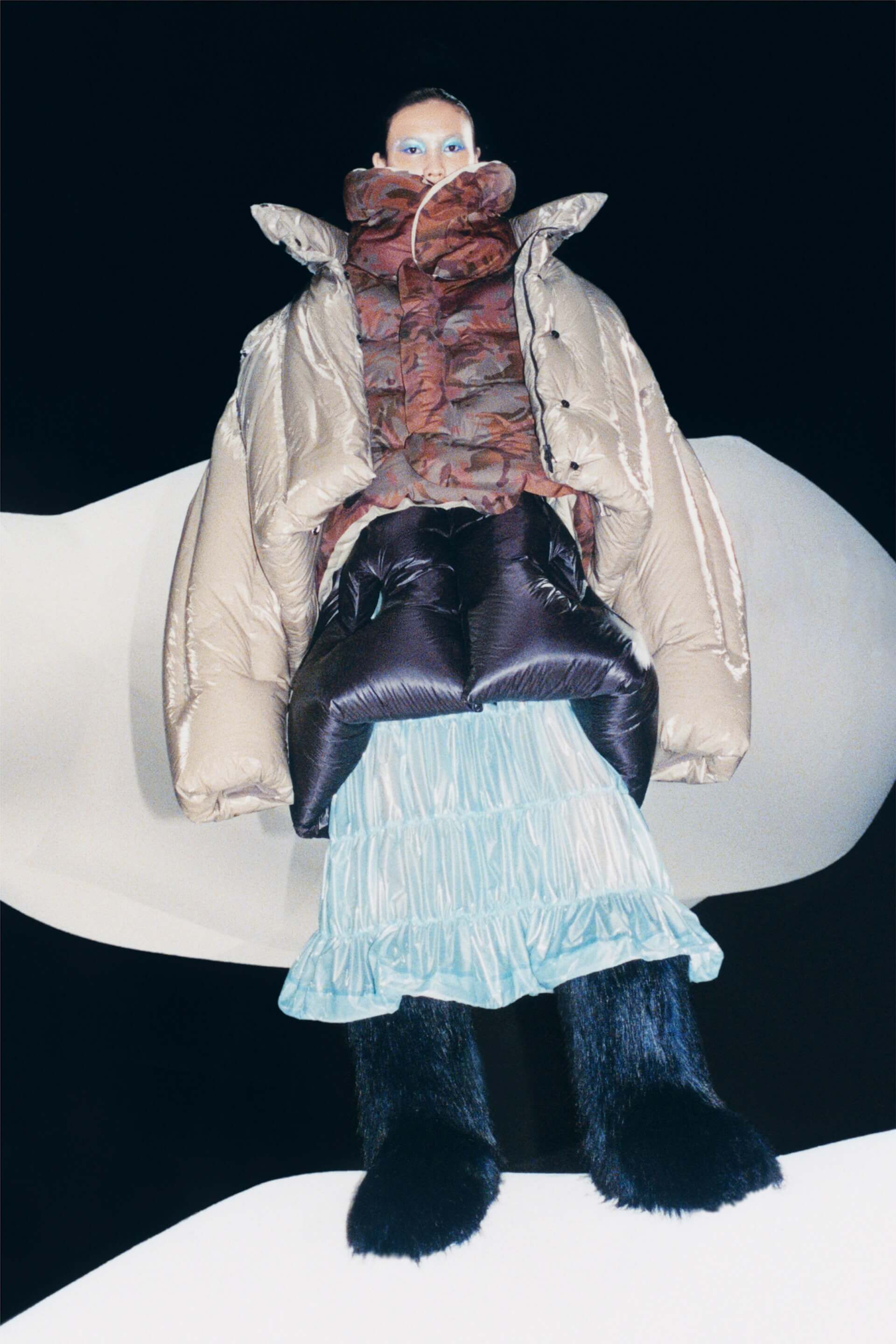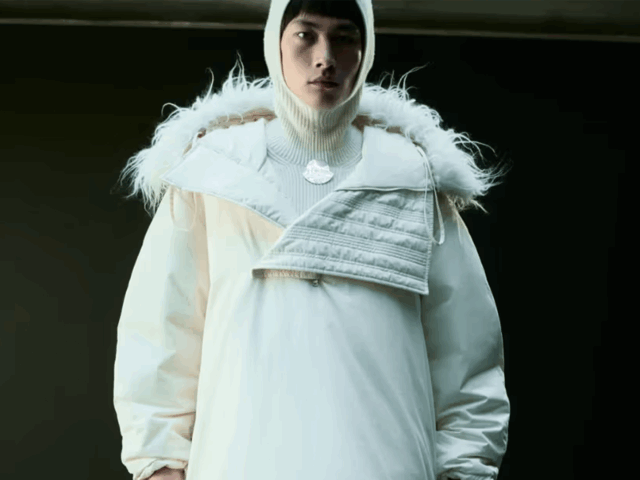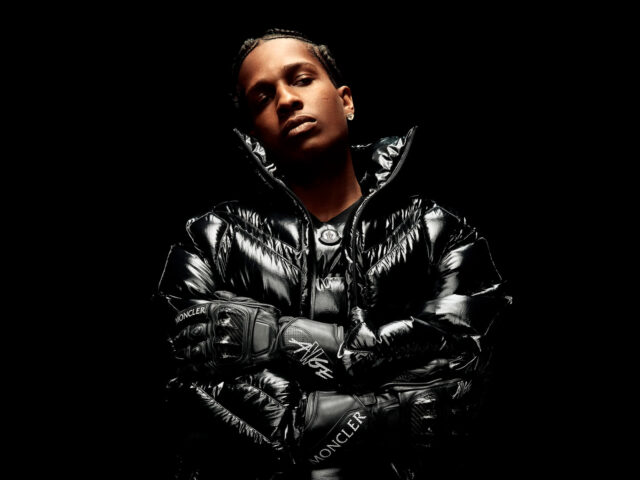Dingyun Zhang becomes the new designer of the Moncler Genius project, an ethereal universe in which he ascends to a supernatural plane with his ‘Underwater Futurism’ collection, which abstractly explores the effects of climate change through fashion.
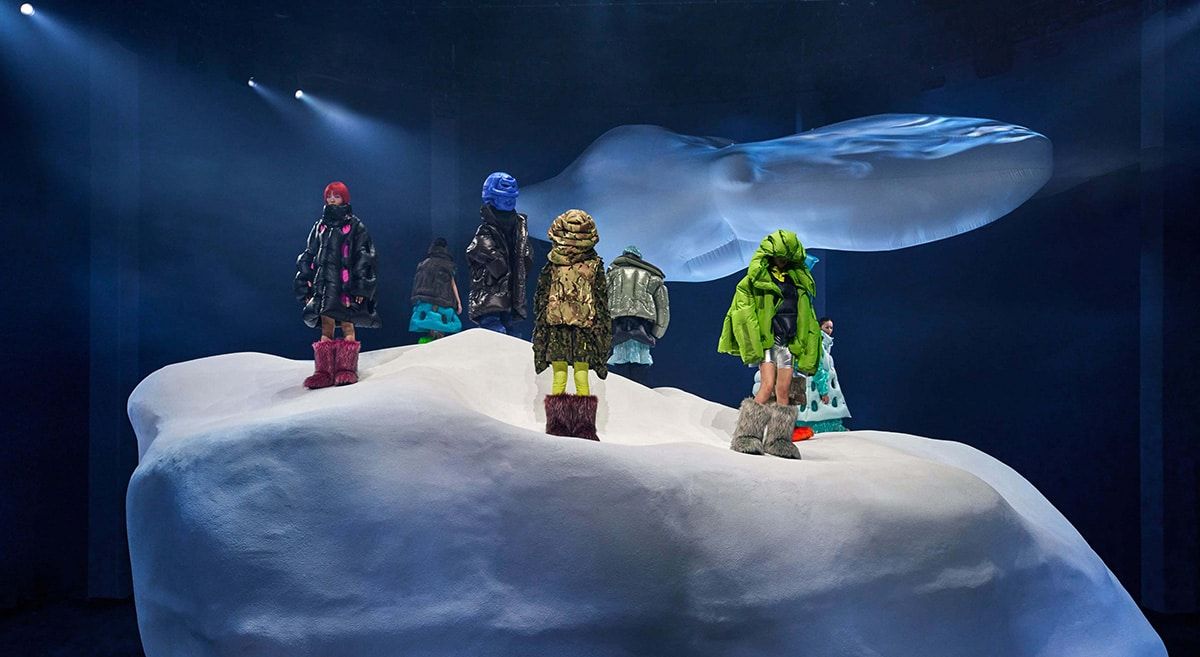
His vision of long-lasting functional design, which we have already seen represented in viral pieces such as the YEEZY 700 Wave Runner, beats again in this capsule in which DYZ dives into the depths of the ocean to bring to the surface creatures that hybridize human and animal in extreme conditions.
The Chinese designer, as a great revelation in the fashion world, now reflects his dualistic identity between streetwear and luxury for the MONCLER legacy. A creative fusion between craftsmanship and sustainable textile innovation that results in gigantic, monstrous outer pieces with quilted volumes that float around the body, transforming it in a sculptural way to survive against all odds, even an apocalyptic or liquid future.
Moncler + Dingyun Zhang Spring 2022 has already emerged from the underwater depths to be projected on the Italian brand’s website and exhibited in its physical spaces. We spoke to Dingyun Zhang (@dingyun_zhang) about this sartorial fantasy and its eco-futuristic revolution in fashion in times of climate emergency.
Highxtar (H) – What inspires your desire to design for the future?
Dingyun Zhang (DZ) – I am inspired by people that live in harsh conditions, because of its effect on the appearance of their clothes and culture. These harsh conditions inspire me to explore ways to create clothing that protects the wearer from these conditions. The way people live, the clothes they wear, what they eat, are all part of that lifestyle, and certainly, those are something in my mind that I would keep as inspiration in the future.
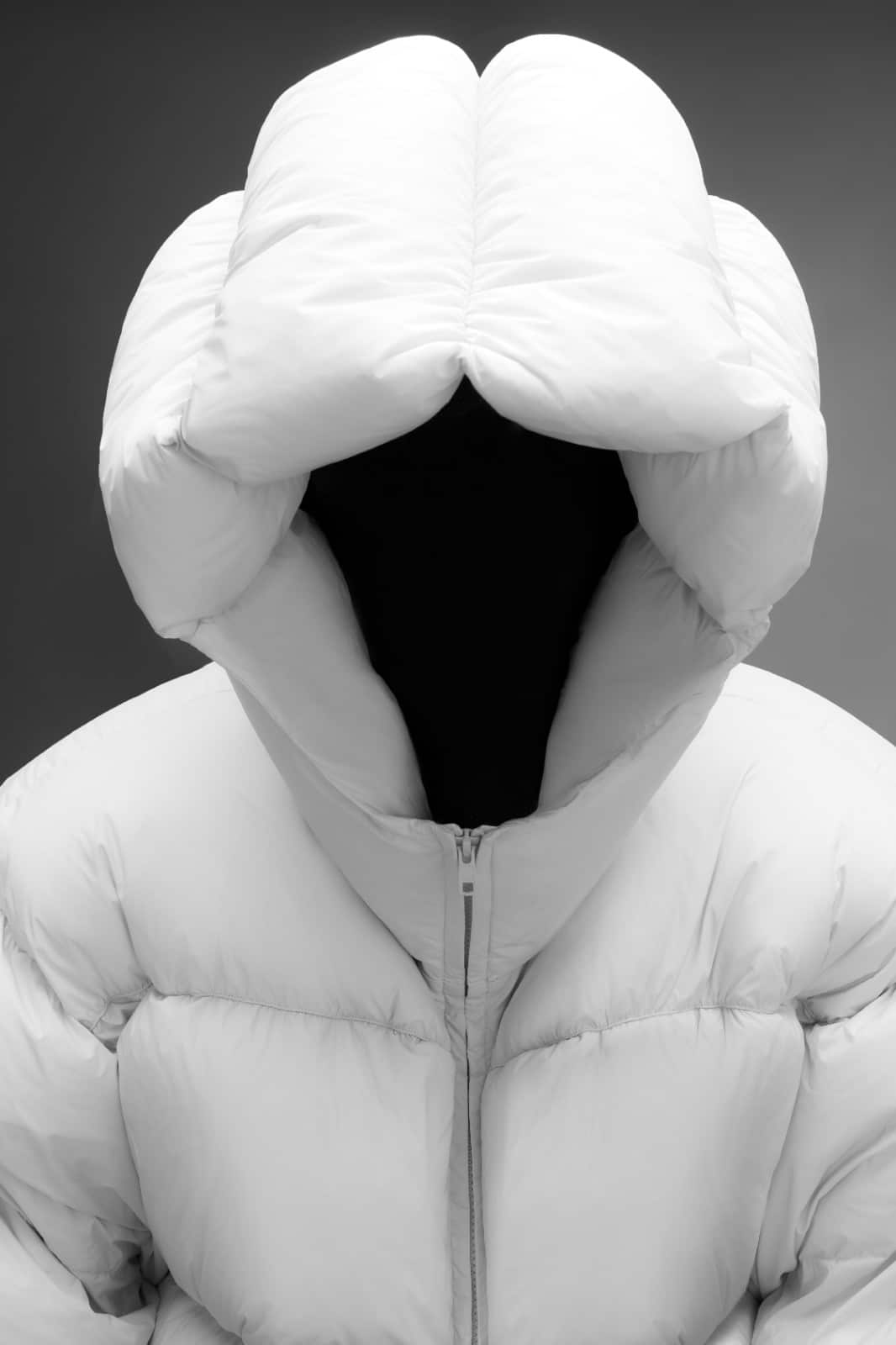
H – What has it been like to be part of Moncler’s Genius project, previously interpreted by iconic designers such as Rick Owens or Matthew Williams? Do you feel that, like them, your vision is already part of the revolution /change?
DZ – It is a great honor to be placed alongside such heralded designers, especially ones whose work you can see have had an immediate impact on culture, and our approach to the creative world.
I feel like my work contributes to the shift because it explores the psychology of what a human form is and the possibilities surrounding that. My design is informed and inspired by very abstract concepts, I am pushing the boundaries of how people interact with and occupy space. The implications of this tied with people’s desire to express themselves are what I believe will further the creative landscape on some intriguing ways.
H – ¿What attracts you to Moncler‘s work, and how have you connected your DNA in the same innovative language?
DZ – There is no present or future without a past, so I took my collaboration with Moncler as a chance to express how much I relate to their traditions and heritage while abstracting this in my own way. Using that foundation they have built-in terms of craftsmanship and detailing, and enhancing that language with my own style of creating shapes. For example using my bonding techniques to create a gutter structure on the jacket, to accelerate the flow of rainwater off of the body. There’s simultaneously a clash and harmony between my construction ideas and Moncler’s traditional details.
H – Fashion’s obsession with the ocean, with its aesthetic and symbolic potential, has led many designers to interpret the seabed and its creatures. Your creations often project environmental and social challenges. In this case, what would be the submerged message in the ‘Underwater Futurism’ collection? Could be a wake-up call linked to climate change, to prevent a liquid future?
DZ – My installation of the Moncler show combines my collection concept with an abstract interpretation of the effects of climate change. We see the collection modeled on top of an abstract landmass, submerged in fog which obscures the environment and extent of the landmass – worn by models in an Apocalyptic environment, the last remaining beings with no distinction between human and creature.
The projection onto the ceiling and inflatable clouds is meant to give the audience a sense of being submerged underwater and distort the audience’s perception of the creatures living on land, or beneath the sea. Their potential to be sea creatures is a result of climate change effects, and their life on land is limited, shown by the fog lingering throughout the space.
Sometimes the decisions we make don’t reflect the best interests of our future. We act without consideration of the consequences of our actions. This setting is meant to sit at the unique intersection of socioeconomic and environmental changes. The visual is the result of our collective choices imposed on us. It’s difficult to identify or discern the human characteristics yet this is all the result of very human decision-making. We’re forced to observe ourselves through a new lens, in a bizarre, almost Kafkaesque quality. The viewing experience is meant to inspire awe and also beg the question of what kind of future awaits us.
H – We can see how the garments and their maxi volumes float around the body, transforming it in a sculptural way. How do you conceptually hybridize the aquatic animal and the human? How do these pieces change in the bodies?
DZ – Trying to imitate the colors and textures of coral and deep-sea creatures, and abstract them into camo prints, and holes in the puffers exposing different colored layers beneath. Constructing this around an exaggerated version of the human form was a way to create each piece as a sculpture, combining them into one.
They come alive when worn on the human body, to create a form that combines our world with theirs. The collection represents the combination of human and animal activity in extreme conditions, challenging the classic Moncler silhouette.
H – ‘Underwater futurism’ seems to have been constructed through a collage technique, layering different materials, cut-outs, faux fur boots, leggings, or exaggerated quilted masks in a palette of organic and eccentric colors. Where do these ideas about the fabrics come from? What was the creative process you went through to balance them all in the same avant-garde universe?
DZ – With a focus on performance fabrics and lightweight nylons, I went forward with the concept of comfort and function running throughout all the pieces. the references and silhouettes I make for the collections have some roots in sports and workwear. Because of this relation to the movement of the body, the coats, padded vests, and cropped blousons are made of ultra-light crinkled nylons for their performance qualities.
The color palette of these fabrics was inspired by the Deepsea realm and earth tones – resembles the coral and fungi that naturally grow on top of sculptures submerged in the deep sea. Those submerged sculptures were inspired by Jason Decaires Taylor, who sculpted the first underwater sculpture park.
H – After this momentous episode in your career, where are you heading? How would you like to change the future through fashion from now on?
DZ – I’m furthering the exploration of new forms and silhouettes of the body. We’re seeing a time where people have really honed in on gender expression etc. and I want to design towards a landscape that reflects that. Equip people with the tools to really manage their perception and outwardly express themselves in every sense of the word.
We see people model themselves sometimes after maybe their favorite character or musician, in terms of personality traits and style. I want to expand that palette into things that are more abstract. People should be able to think about modeling their style from maybe their favorite architectural designs or forms in nature. A building doesn’t need to be limited to four walls and a roof, and our architectural advances reflect that sentiment.
We can look around and see buildings with adornments that really accent the settings of our lives. It’s the same thing as how an outfit doesn’t just need to be a t-shirt and jeans. This approach is what I’d like to have incorporated more of in the future of fashion.
I want people to see fashion not only as a look off the runway or their favorite celebrity, but also as something naturally occurring in everyday life. It is really about studying the interaction of any surface with its immediate environment.
Sigue toda la información de HIGHXTAR desde Facebook, Twitter o Instagram
You may also like...
